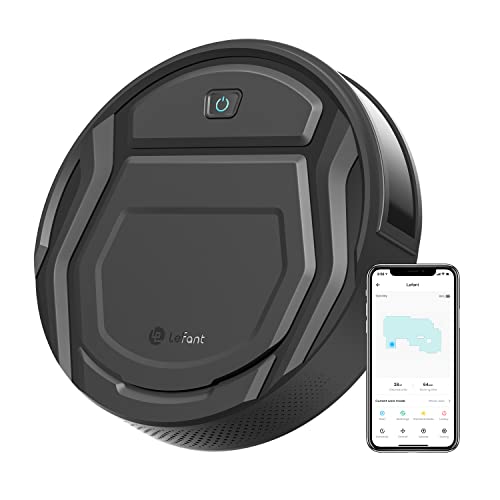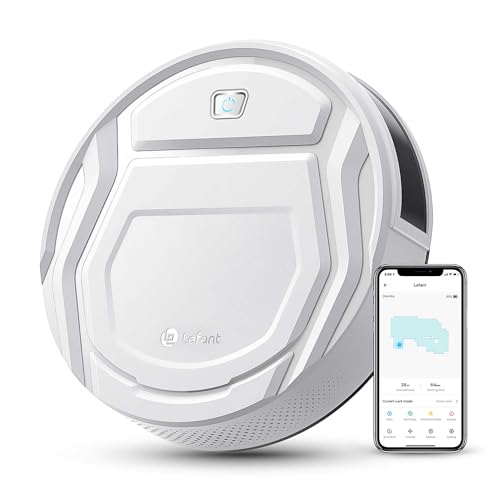Your Family Will Be Grateful For Having This Robot Vacuum For Pet Hair
페이지 정보
작성자 Nelly 작성일24-09-03 04:03 조회2회 댓글0건본문
 A Robot Vacuum For Pet Hair Can Help Keep Your Floors Clean
A Robot Vacuum For Pet Hair Can Help Keep Your Floors CleanA robot vacuum can help you save a lot of time and effort cleaning your floors. You should look for a robot vacuum with an front-facing video so that you avoid crashing into furniture legs or pet toys. Additionally sensors that increase the suction power will help you tackle more pet fur.
Choosing the right vacuum
Cleaning your home with pets can be a challenge. Pet hair can get embedded in carpets, get under furniture, and stick to surfaces and appliances. Regular mopping or vacuuming can pick up most of it, but the rest is difficult to keep under control without the right tools. This is where a robotic vacuum for pet hair could help.
With specialised brushes and powerful suction, these devices can keep the shedding at bay to make sure your home isn't a dander-fest. They can also be programmed to run as frequently as you'd like, which means they'll help keep your home clean between more thorough cleanings with the traditional vacuum cleaner.
If you're going to purchase a robot vacuum for pet hair, you need to research before you buy. The most effective models will have enough suction to eliminate hair and dirt that is difficult to remove and fur, and a large dustbin that reduces the frequency of emptying it. Choose one that is quieter than your typical vacuum, as it won't annoy you or your pets while it's working.
You should consider whether you need models with advanced features like mapping, object avoidance, or self-emptying. These extras will add to the price of your device. Decide how important they are before you make a purchase.
A few robot vacuums are equipped with HEPA filters, which help to minimize allergens in your home. If you or your pet have allergies, this can be a huge advantage in that it can help reduce sneezing and congestion.
Sensors
Many robot vacuums come with sensors that allow them to keep track of the location on the floor and avoid obstacles. This is important for pet owners because hair and dander can become embedded in carpets and rugs, and require special treatment. A reliable sensor will allow the robot to recognize when it has reached the floor, so it can stop cleaning and start mopping.
You might want to consider a robot vacuum that does an excellent job of detecting toys and other objects that are left on the floor so that it won't be caught up and tossed around the room. Many of the more expensive smart-home models that are connected can do this and feature advanced mapping capabilities, and can even create "no-go zones".
 Another feature that is helpful for those who prefer a quieter operation which is less distracting and as Dr. Cunniffe points out, can also reduce the amount of allergens that are present in the air. Choose a vacuum that is able to run at 60 to 70 decibels, which is significantly less loud than a traditional vacuum.
Another feature that is helpful for those who prefer a quieter operation which is less distracting and as Dr. Cunniffe points out, can also reduce the amount of allergens that are present in the air. Choose a vacuum that is able to run at 60 to 70 decibels, which is significantly less loud than a traditional vacuum.Consider whether you want an appliance that can clean the surfaces of your furniture, such as a kitchen table or sofa. The majority of the vacuums we tested were able to do this. Some can even be used to clean surfaces such as countertops and tables.
If you're a dog owner, then a robot vacuum for pet hair is an essential device to keep your home clean and healthy. Getting a model that is effective and easy to use is the best robot vacuum for hair way to be sure that it is an asset to your household. With the right device you will be less worried about hair and dander and more time with your pets. Kat de Naoum is a writer for the business sector with more than 10 years of experience in covering consumer products and services for a variety of clients, including travel, real estate, finance, and education. She has also written extensively about health and food. She is currently the commerce editor-at-large for Thomas-Xometry.
Cleaning Areas
Like the name suggests, a robot vacuum for pet hair is an intelligent appliance that is designed to collect debris caused by your pets. They are smaller than the traditional units and therefore more efficient in small spaces. They're also designed to be used on various floors, including hard floors and carpets. Some models have a mopping feature that can be used to clean up kitty litter or other kinds of damp mess.
Most models feature a dust bin or bag which is easy to empty and filled, reducing the maintenance you'll need perform. The bigger the bin, the more time it takes to empty. However, some robot vacuums can automatically refill themselves when the battery is depleted. You should also look out for features like mapping capabilities, no go zones, customized cleaning programs, app control and voice activation in a pet friendly robot vacuum.
Robotic vacuums can get stuck in places like carpets and door thresholds, or tangled in toys or cords. This is typically due to the lack of sensors and sophisticated programming, so it's essential that you have a precise map of your house to assist the vac in avoiding obstacles. Some models have this capability, while others offer an evasive technology that can detect any furniture or cat toys that are stray and move them around.
The most effective pet hair robot vacuums are fitted with sensors that detect bare floors and other obstacles, like furniture. They can also make an itinerary that avoids staircases and tripping hazards, which is especially helpful for those with large or older pets. These smart devices can be programmed to clean in accordance with the schedule, so that you wake up in a spotless home with no effort on your finger.
Robot vacuums are a great accessory for any home. However, they can't replace an old-fashioned vacuum. They're more effective for regular maintenance and keeping pet hair at bay between more thorough cleanings with a regular machine. They're also useful for homes with allergy sufferers because they can eliminate a substantial amount of dander and allergens from the home's interior.
Maintenance
Pet hair can get stuck to upholstery, carpets and other surfaces, making it difficult to clean. A robot vacuum specifically designed to remove pet hair can solve the issue and save time while keeping your home tidy.
To determine the best robot vacuum cleaner for pet hair vacuum lidar for pet hair (simply click the next site) robot vacuum for pet hair, you should consider factors such as the power of the cleaning machine, bin size, battery life, and more. Some models have sensors for wet materials that stop the cleaner from causing damage to your floor when it comes into contact with something wet. Also, look for models with intelligent navigation systems which can detect obstacles and navigate around them. Ideally the robot will be able recognize walls and other features without hitting them or turning around and causing damage to your floors.
Picking a robot with a large dustbin will help you not have to empty it frequently. Some models are self-emptying to further reduce the frequency maintenance tasks. Also, you should select the robot that has an app that allows you to create a schedule and custom routines, and also areas that you don't want the robot to clean.
Some pet owners are worried about their pets reaction to a robotic vacuum specifically designed to remove pet hair. Some animals might be scared when they hear and see these machines. You can minimize the chance of being scared by introducing your pet to it. Introduce the robot to your pet while it's off, then gradually turn it back on while offering them treats. Over time, your pet should learn that the machine is not an issue and is able to do its job.
A robot vacuum for pet fur could save you time and effort however it requires regular maintenance. You should inspect the wheels and brush roll of your robot regularly to ensure that they aren't getting tangled with hair. You should also wipe the wheels with a damp towel to eliminate any sticky gunk that could cause the traction of your robot vacuum and mop pet hair to be affected and cause it to malfunction.
댓글목록
등록된 댓글이 없습니다.

